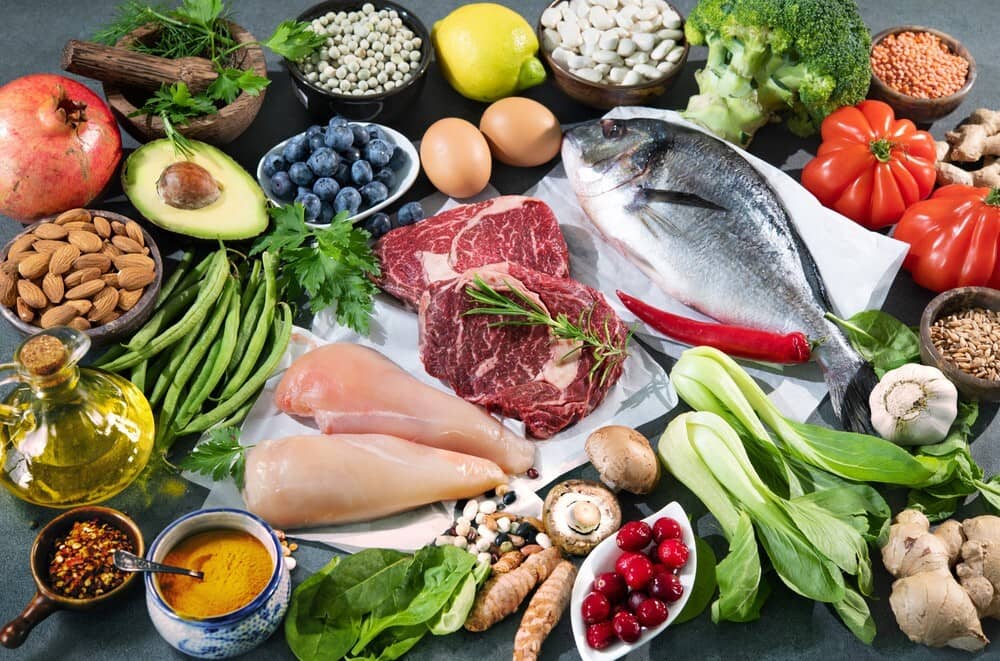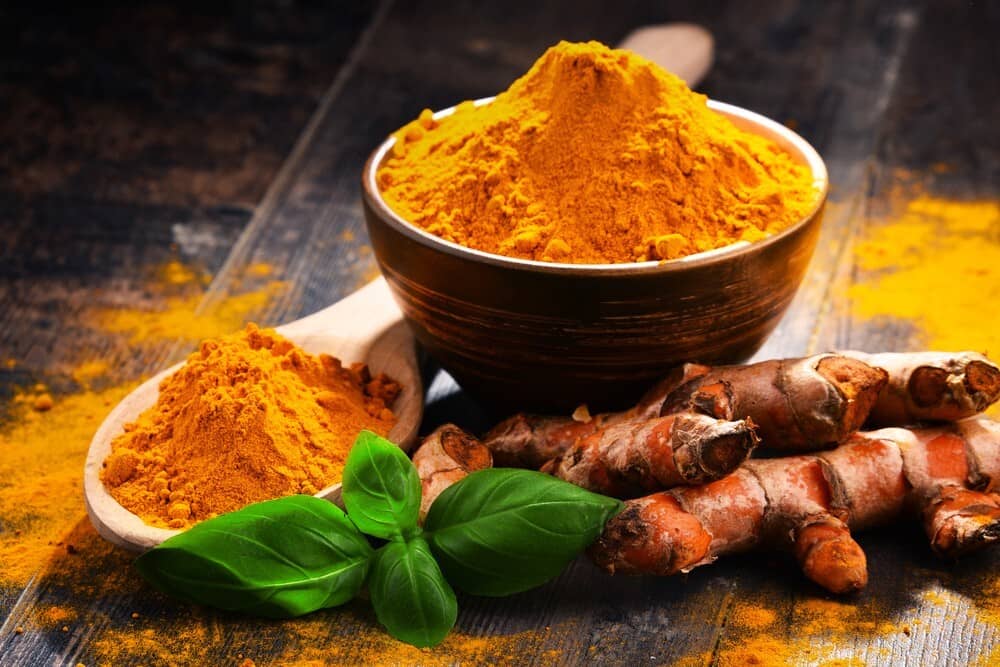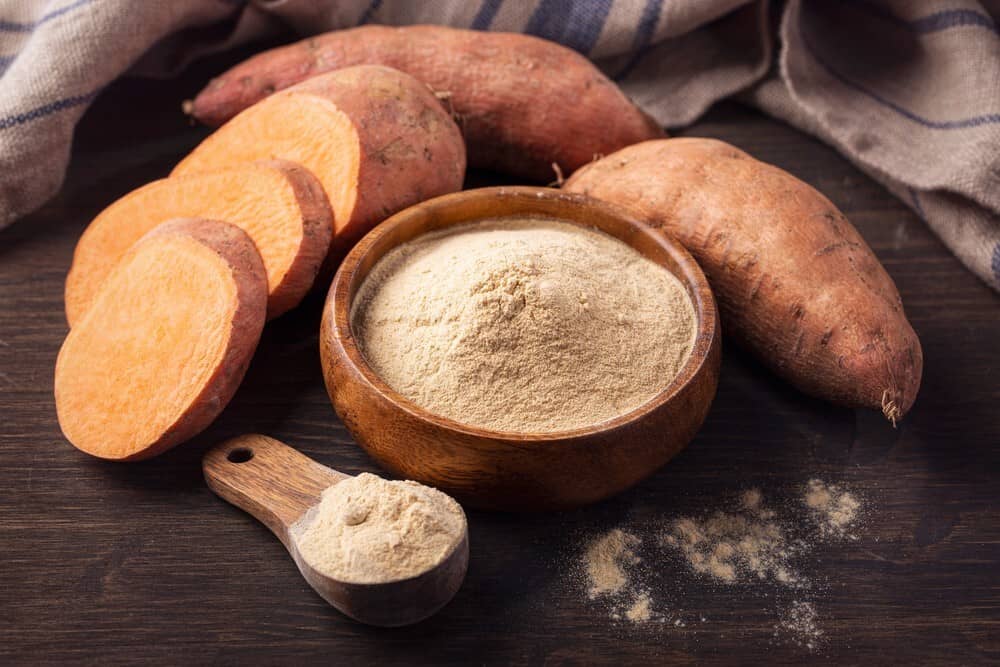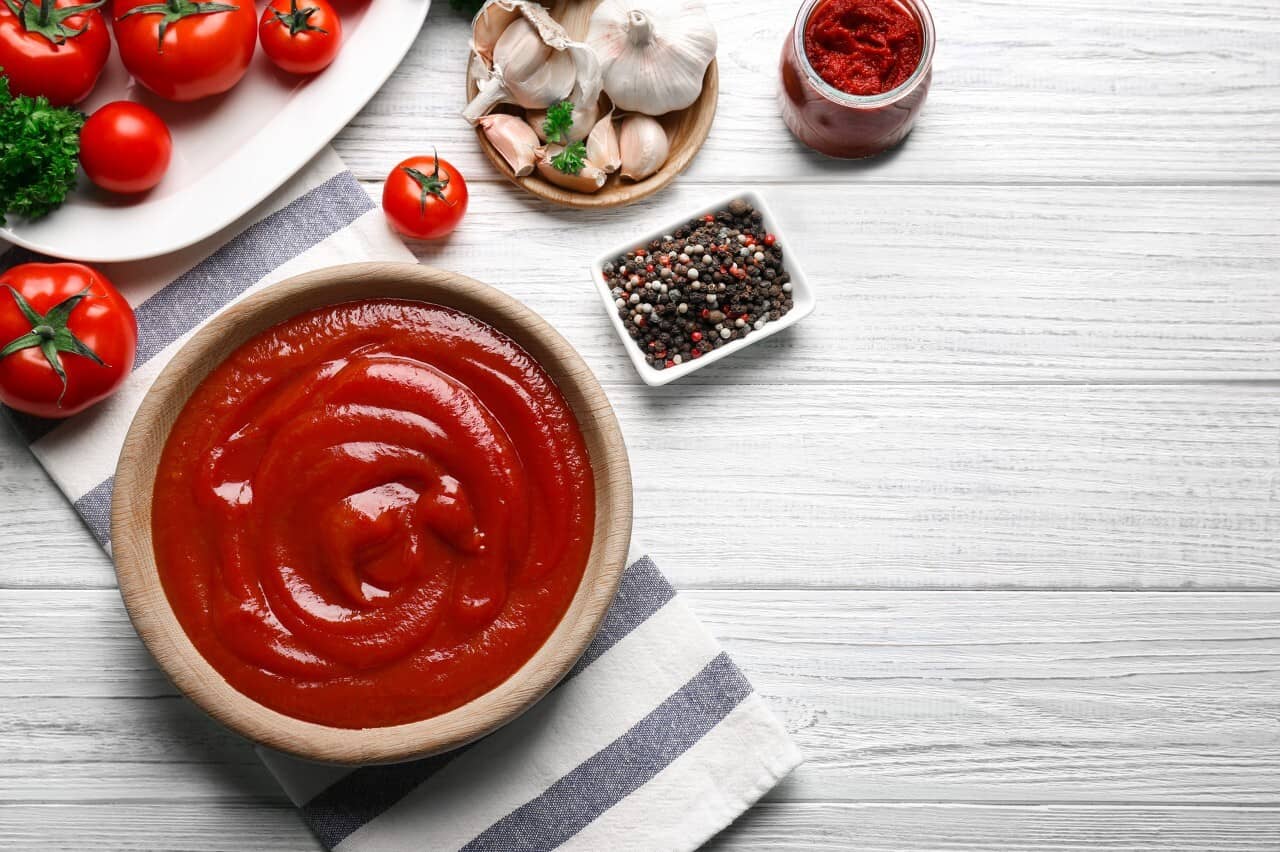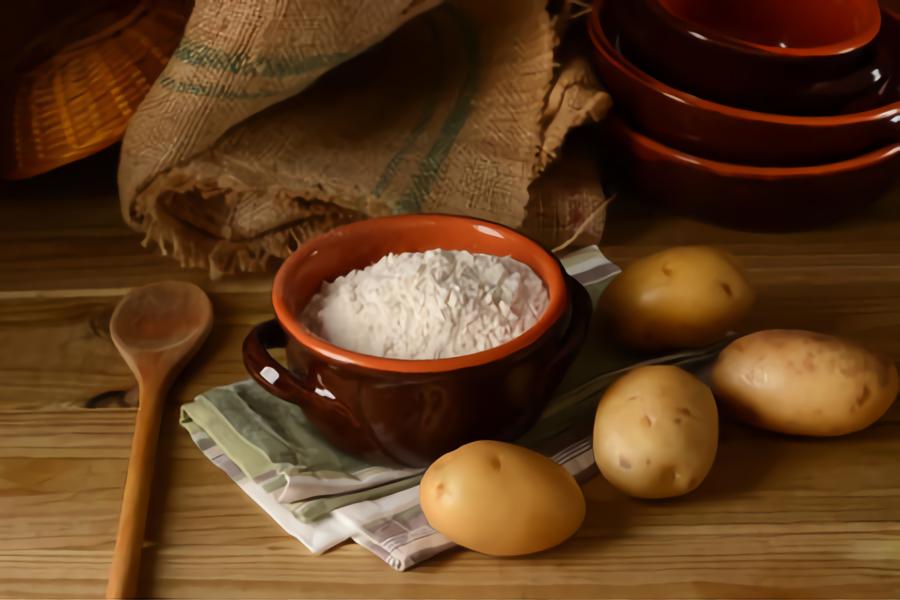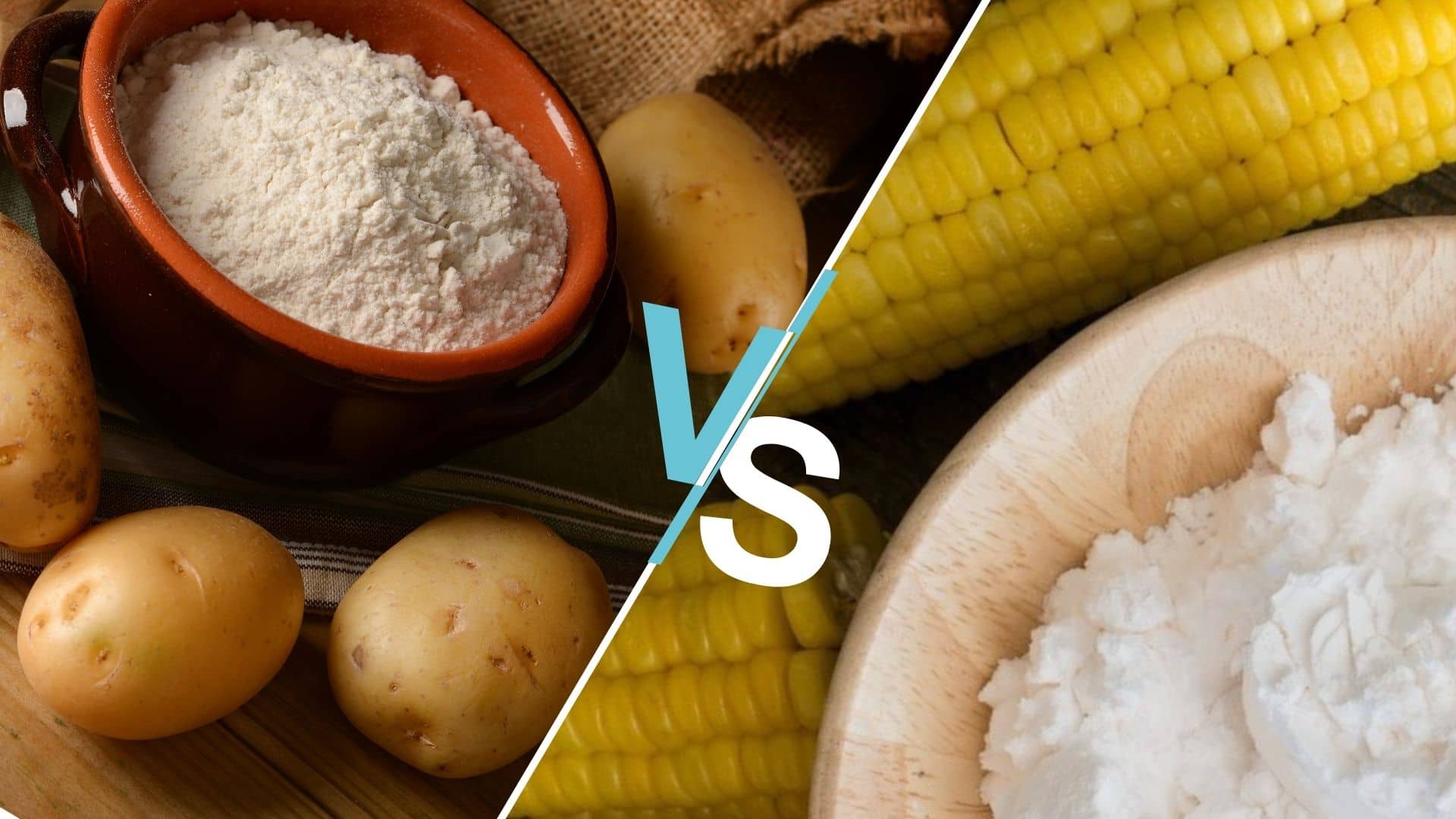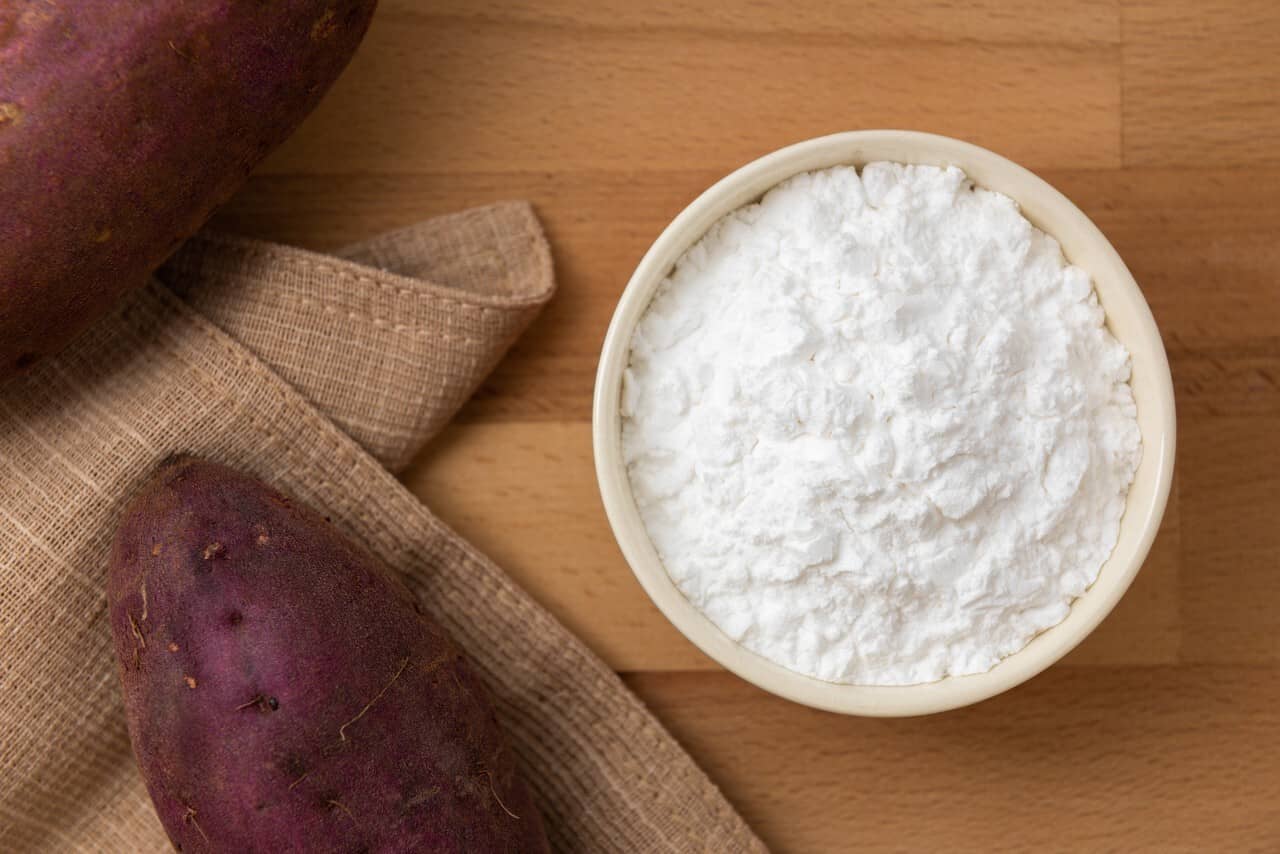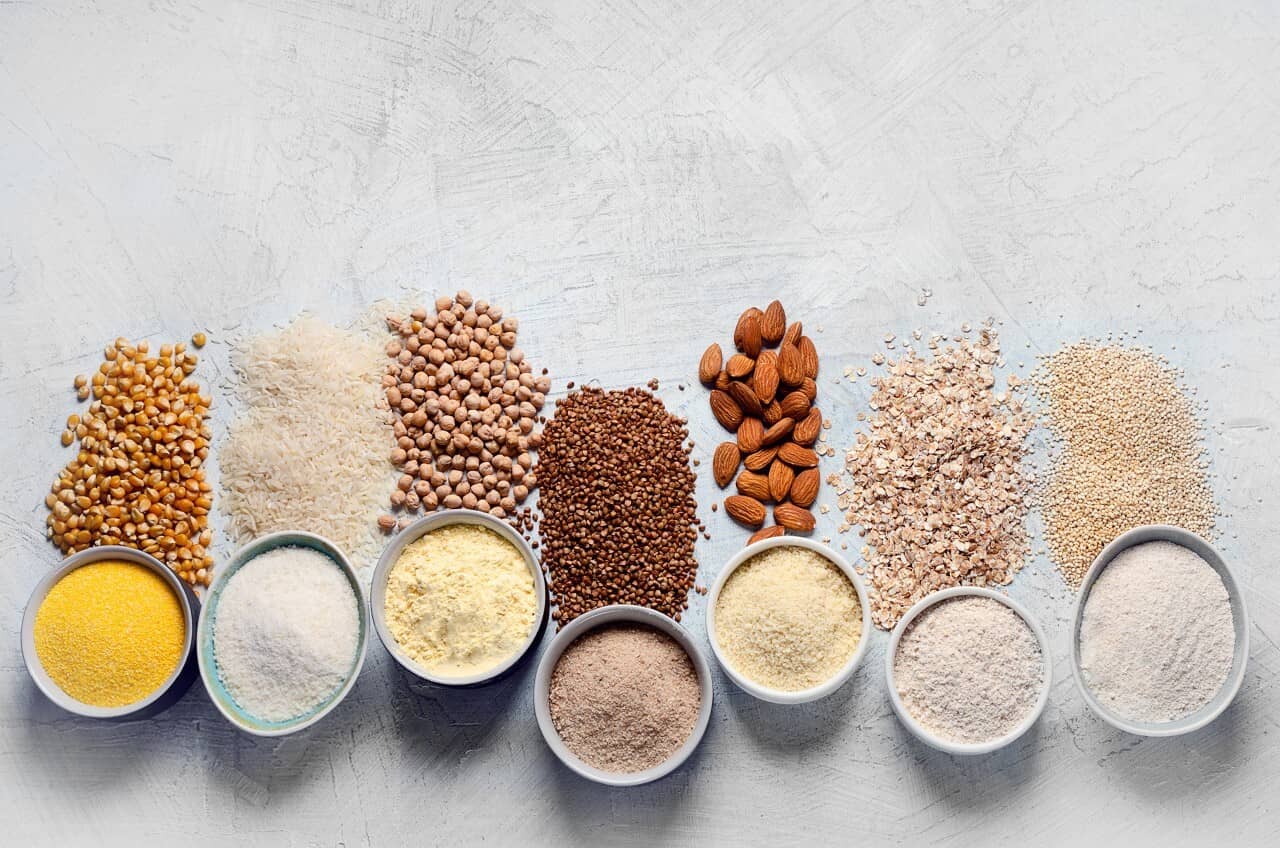Being gluten-free, fat-free, and cholesterol-free, potato starch becomes one of the best alternatives to regular wheat flour as well as a rich source of carbohydrates.
Despite being a rich source of carbohydrates, it can be used to help reduce weight and improve blood sugar and cholesterol levels, thanks to resistant starch, which plays an important role in protecting the stomach and intestines from infections that lead to cancer, And many other benefits that come from using resistant starch again that you are interested to know, so continue reading the article.
What’s resistant starch?
Resistant starch is one of the best types of starch. It is called this because of the resistance to digestion and conversion into glucose by enzymes secreted by the digestive system, so it maintains its shape and moves to the large intestine (colon) to become a food source for the gut microbiome in the form of short-chain fatty acids, similar to the action of soluble fiber, so it is recommended to add it to your diet because it is an element with multiple health benefits.
How many types of resistant starch
The type of resistant starch varies according to the source, Resistant starch can be divided into four types: ((Resistant Starch–A Review – Sajilata – 2006 – Comprehensive Reviews in Food Science and Food Safety – Wiley Online Library))
- The type is available in legumes, seeds, and grains that hug the walls of fibroblasts and are not digested by enzymes
- The type is available in raw vegetables and fruits such as bananas and potatoes.
- The most common type in starchy foods is obtained through the process of cooking and cooling, turning indigestible starch into resistant starch, which is also found in rice and potatoes.
- The last type: It is chemically manufactured by adding enzymes or other chemicals to modify the original starch and give it properties suitable for the purpose for which it was manufactured.
Speaking of potatoes as one of the sources of resistant starch, it is considered a rich source, whether starch is extracted from raw, cooked, and cooled potatoes.
How resistant is potato starch?
Potato starch is one of the richest sources of resistant starch, whether the potato is raw or cooked, as it represents 80% of the raw potato starch is resistant starch and is widely used as a food supplement by adding to juices and yogurt, It is not preferable to heat it, but add the recipe after cooling it well, Likewise, if the potatoes are well cooked and then cooled for a few hours, this increases the amounts of resistant starch in them.
Nutrition
Potato starch and white wheat ((Potato starch, unmodified (Bob’s Red Mill, Tbsp))) ((Nutrition facts for Wheat, soft white, recommended daily values and analysis. (nutritionvalue.org)))
100 grams of potato starch contains about:
- 333 calories < 361 per White wheat
- 83.3 grams carbohydrates < 72.5 per White wheat
- 0 dietary fiber < 2.4 grams per White wheat
- 0 sugar < 0.31grams per White wheat
- 0 protein < 12 grams per White wheat
- 0 Saturated fats < 0.24grams per White wheat
- 0 Vitamin A < 0.6 microgram per White wheat
- 0 Vitamin E < 0.4mg per White wheat
- 0 Vitamin K < 0.3 microgram per White wheat
- 0 Vitamin B6 < 0.037mg per White wheat
- 0 Calcium < 15mg per White wheat
- 0 iron < 4.4mg per White wheat
- 0 potassium < 100mg per White wheat
- Gluten-free It is entered as an additive to gluten-free flour because its abundance causes dryness in baked goods. Modified starch rich in amylopectin can be used, which helps to extend the life of baked goods and keep them soft.
Pros of using potato starch
Potato starch is divided according to the speed of digestion into fast and slow-digesting starch and resistant starch.
By comparing the types of potato starch, it was noted that resistant starch has amazing health benefits that other’s do not have, which are:
-
- Lowering blood sugar levels: Thanks to the resistant starch, which can prevent the digestive enzymes from breaking it down and converting it into glucose, so it goes directly to the colon as it is, thus preventing the sudden filling of the bloodstream with glucose, which raises blood sugar levels, It also remains effective for the second meal. ((Resistant starch: the effect on postprandial glycemia, hormonal response, and satiety – PubMed (nih.gov)))
- Reduce insulin sensitivity: Some studies have indicated that following a healthy diet containing resistant starch with an amount of 15-30 grams for four weeks has significant results in improving insulin sensitivity, This contributes to reducing the risk of chronic diseases such as heart disease, obesity and type 2 diabetes. ((Resistant Starch from High-Amylose Maize Increases Insulin Sensitivity in Overweight and Obese Men (nih.gov)))
- Help lose weight: Resistant starch works similarly to soluble fiber, providing the body with the carbohydrates it needs and causing a prolonged feeling of fullness, Also, resistant starch contains fewer calories than regular starch. ((Resistant starch lowers postprandial glucose and leptin in overweight adults consuming a moderate-to-high-fat diet: a randomized-controlled trial (nih.gov)))
- Reducing the level of cholesterol in the blood: One of the types of resistant starch of type 4 starch reduces all types of cholesterol, which is good for health. ((Meta-analysis indicates that resistant starch lowers serum total cholesterol and low-density cholesterol – PubMed (nih.gov)))
- Improving metabolic health: Resistant starch acts as a prebiotic that nourishes gut bacteria, resulting in increased levels of probiotic bacteria, which are an important factor in maintaining a healthy gut. One of the most important properties of probiotic bacteria is the production of butyrate by converting resistant starch by gut bacteria into short-chain fatty acids, the most important of which is butyrate, one of the most important compounds that line the intestines and maintain its integrity. ((Resistant starches for the management of metabolic diseases (nih.gov)))
- Heal constipation: Propionic, acetic, and butyric acids are a group of fatty acids that are produced in the large intestine after the resistant starch itself escapes from being digested by the small intestine, they are short-chain acids that contribute greatly to the regulation of gastric and intestinal functions, such as the action of butyrate in improving bowel movement and increasing its contractility to help facilitate the process of excretion. ((Butyric acid in functional constipation))
- Beneficial for intestinal and colon health:
- (for the intestines): When eating resistant starch, such as found in potato starch, and reaching the intestines and transform it by gut bacteria, it produces butyrate, which in turn produces antioxidant functions and works to resist infections and reduce the incidence of bowel cancer.
- (for the colon): Colon butyrate also makes cancer cells kill themselves, as it acts as an inhibitor of histone deacetylase, an enzyme made by cancers. ((Butyrate suppresses colonic inflammation through HDAC1-dependent Fas upregulation and Fas-mediated apoptosis of T cells (nih.gov)))
How can increase the proportion of resistant starch help reduce blood sugar?
The best way to increase the amount of resistant starch is by cooking the recipe and refrigerating it. Refrigeration helps reduce the rate of fast-digesting starch and increase the rate of resistant starch and thus helps reduce blood sugar.
Cons of using potato starch:
Potato starch does not pose health risks to humans, but there are some drawbacks to note:
- When we make a simple comparison between potato and its starch, we notice a clear difference in the nutrients for each. Potato is characterized by its richness in various minerals and vitamins. On the other hand, the ingredient that potato starch contains is carbohydrates only.
- Also, some suffer from digestive problems such as gas and bloating when using starch in their diet, This is due to its fiber-like action.
- It contains amylose in its composition, which makes it contribute to the rapid crystallization of the recipe, which is undesirable, and therefore companies resort to making modified starch.
Substitutes for potato starch
We can overcome the disadvantages resulting from the use of potato starch by providing the appropriate alternative. For example, almond flour is an alternative rich in minerals and vitamins and suitable for a healthy lifestyle, as well as sweet potato starch, which has a strong nutritional value. And if you want gluten-free alternatives, you should use tapioca and arrowroot starch, also note that genetically modified alternatives such as flora are extracted from them completely free of amylose, and many alternatives are compatible with the purpose you want.
Read More: 16 Potato Starch Substitutes And Best Uses
About modified starch
It is a starch that companies manufacture and give it concentrated properties suitable for its manufactured purpose, such as enduring different temperatures and increasing its life span, etc. This is done by treating its original structure by adding enzymes or chemicals,
Uses
Potato starch is similar to others in the usual uses as it gives a thick texture for broths, fillings, etc., as well as a crispy and golden cover for fried foods, but it can be distinguished from them as it is tasteless, so it preserves the flavor of the original recipe free of gluten, extending the life of the bread and making it soft and tender for a longer period, as well as the rich modified potato starch Amylopectin improves anti-mildew properties




